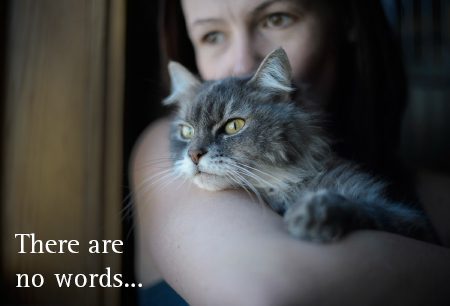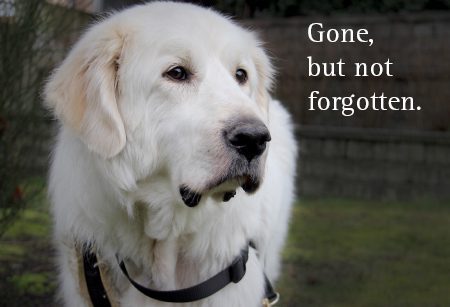The BC SPCA believes the balance of scientific evidence indicates that fish and cephalopods (e.g., octopuses, squids) are sentient, capable of experiencing pain, fear and distress. Research also suggests that decapod crustaceans (e.g., crabs, lobsters) have the capacity to feel pain. The Society therefore advocates the adoption of practices that minimize stress and suffering in these animals.
To safeguard the welfare of fish and aquatic invertebrates, the BC SPCA supports:
- The adoption of legislation, regulation and policies that protect their health and welfare;
- The development and use of the highest professional accreditation standards and programs that evaluate and improve their capture, care, breeding, handling, transport, release and killing; and
- Further research and development in all areas of their management that have an impact on welfare.
Approved by the Board of Directors – December 2018
(replaces Sport Fishing, January 1999)
Background
Fish and aquatic invertebrates play diverse roles in our society. They are farmed and caught for consumption; they are subjects of research, teaching and testing; they are kept as companion animals; they are used in recreation, sport and entertainment; and they are the focus of many conservation efforts.1, 2 Fish in particular are the most heavily used vertebrate animal on Earth: for instance, an estimated 47 billion fish are landed recreationally every year, with a further 157 billion caught commercially.3
Evidence that fish can feel pain, experience fear and are capable of suffering has been accumulating for decades. It has now reached a point where the sentience of fish is acknowledged by scientists around the world.1 Similarly, there is widespread recognition of sentience in cephalopods (e.g., octopuses, squids) within the scientific community.4 It must be noted, however, that some still view sentience in these animals with skepticism.5
Research also suggests that decapod crustaceans (e.g., crabs, lobsters) have the capacity to feel pain, and some consider this evidence to be as strong as the evidence for pain in fish.6 However, others regard the scientific literature on the subject as immature.7 As a result, the idea that fish experience pain has gained wider acceptance to date than the concept of decapod pain.6
Based on the available evidence on the functioning of fish, cephalopods and decapod crustaceans, many scientists have concluded that, firstly, there should be concern for their welfare and, secondly, there should be careful consideration of human actions that impact their welfare.8-15
Human activities affect the welfare of fish and aquatic invertebrates directly and indirectly, and with varying severity and duration. Poor welfare can occur whenever these animals are caught16, 17, cared for in captivity18-20, bred1, 21, 22, handled23, 24, transported23, 24, released25, 26 or killed27, 28. Furthermore, free-living fish and aquatic invertebrates may be impacted by human-caused environmental degradation and disturbance.17, 29, 30
Worldwide, a number of prominent organizations have already responded by adopting welfare guidelines or statements for fish and aquatic invertebrates: the Canadian Council on Animal Care (CCAC)31, the European Food Safety Authority (EFSA)32, the American Veterinary Medical Association (AVMA)33, the European Union (EU)34, the World Organization for Animal Health (OIE)35, and the Royal Society for the Prevention of Cruelty to Animals (RSPCA) in both the United Kingdom36 and Australia37, among others.
Given the significant number of animals involved, the myriad ways that humans use and interact with them, and their ability to suffer, the BC SPCA believes that fish and aquatic invertebrates are due far greater consideration than they currently receive. The Society therefore urges all individuals and institutions responsible for these animals to make evidence-based improvements to their welfare.
See also:
Animals in Recreation, Sport and Entertainment
Animals Used in Research
Animals Used in Science
Animals Used in Testing
Farm Animal Welfare
Humane Killing
Live Feeding to Animals in Captivity
Use of Animals in Teaching
Wild and Exotic Animals in Zoos, Aquariums and Other Permanent Captivity
Wild and Exotic Animals Kept as Pets
Wild Animal Welfare
Background updated – January 2022
References
1 Branson EJ (ed) 2008 Fish Welfare. Blackwell Publishing Ltd: Oxford, UK
2 Horvath K, Angeletti D, Nascetti G and Carere C 2013 Invertebrate welfare: An overlooked issue. Annali dell’Istituto Superiore di Sanità 49: 9-17
3 Balcombe J 2016 What a fish knows: The inner lives of our underwater cousins. Scientific American/Farrar, Straus and Giroux: New York, USA
4 AHAW Panel 2005 Opinion of the Scientific Panel on Animal Health and Welfare on a request from the Commission related to “Aspects of the biology and welfare of animals used for experimental and other scientific purposes”. The EFSA Journal 292: 1-46
5 Browman HI, Cooke SJ, Cowx IG, Derbyshire SWG, Kasumyan A, Key B, Rose JD, Schwab A, Skiftesvik AB, Stevens ED, Watson CA and Arlinghaus R 2018 Welfare of aquatic animals: Where things are, where they are going, and what it means for research, aquaculture, recreational angling, and commercial fishing. ICES Journal of Marine Science fsy067: 1-11
6 Ellwood RW 2012 Evidence for pain in decapod crustaceans. Animal Welfare 21(S2): 23-27
7 Diggles BK 2018 Review of some scientific issues related to crustacean welfare. ICES Journal of Marine Science fsy058: 1-16
8 Broom DM 2007 Cognitive ability and sentience: Which aquatic animals should be protected? Diseases of Aquatic Organisms 75: 99-108
9 Brown C 2015 Fish intelligence, sentience and ethics. Animal cognition 18: 1-17
10 Brown C, Laland K and Krause J (eds) 2011 Fish Cognition and Behaviour. Blackwell Publishing Ltd: Oxford, UK
11 Chandroo KP, Duncan IJH and Moccia RD 2004 Can fish suffer?: Perspectives on sentience, pain, fear and stress. Applied Animal Behaviour Science 86: 225–250
12 Håstein T, Scarfe AD and Lund VL 2005 Science-based assessment of welfare: Aquatic animals. Scientific and Technical Review of the International Office of Epizootics 24: 529-547
13 Mather JA and Anderson RC 2007 Ethics and invertebrates: A cephalopod perspective. Diseases of Aquatic Organisms 75: 119-129
14 Sneddon LU 2015 Pain in aquatic animals. The Journal of Experimental Biology 218: 967-976
15 Vila Pouca C and Brown C 2017 Contemporary topics in fish cognition and behaviour. Current Opinion in Behavioral Sciences 16: 46-52
16 Cooke SJ and Sneddon LU 2007 Animal welfare perspectives on recreational angling. Applied Animal Behaviour Science 104: 176-198
17 Diggles BK, Cooke SJ, Rose JD and Sawynok W 2011 Ecology and welfare of aquatic animals in wild capture fisheries. Reviews in Fish Biology and Fisheries 21: 739-765
18 Conte FS 2004 Stress and the welfare of cultured fish. Applied Animal Behaviour Science 86: 205-223
19 Moltschaniwskyj NA, Hall K, Lipinski MR, Marian JEAR, Nishiguchi M, Sakai M, Shulman DJ, Sinclair B, Sinn DL, Staudinger M, Van Gelderen R, Villanueva R and Warnke K 2007 Ethical and welfare considerations when using cephalopods as experimental animals. Reviews in Fish Biology and Fisheries 17: 455–476
20 Stevens CH, Croft DP, Paull GC and Tyler CR 2017 Stress and welfare in ornamental fishes: What can be learned from aquaculture? Journal of Fish Biology 91: 409-428
21 Elwood RW, Barr S and Patterson L 2009 Pain and stress in crustaceans? Applied Animal Behaviour Science 118: 128-136
22 Fleming IA and Huntingford F 2012 Reproductive behaviour. In: Huntingford F, Jobling M and Kadri S (eds) Aquaculture and Behavior pp 286-321. Blackwell Publishing Ltd: Oxford, UK
23 Ashley PJ 2007 Fish welfare: Current issues in aquaculture. Applied Animal Behaviour Science 104: 199-235
24 Fotedar S and Evans L 2011 Health management during handling and live transport of crustaceans: A review. Journal of Invertebrate Pathology 106: 143–152
25 Davie PS and Kopf RK 2006 Physiology, behaviour and welfare of fish during recreational fishing and after release. New Zealand Veterinary Journal 54: 161-172
26 Kerr SJ and Grant RE 2000 Ecological impacts of fish introductions: Evaluating the risk. Fish and Wildlife Branch, Ontario Ministry of Natural Resources: Peterborough, Canada
27 Lines JA and Spence J 2014 Humane harvesting and slaughter of farmed fish. Scientific and Technical Review of the International Office of Epizootics 33: 5255-5264
28 Yue S 2008 An HSUS report: The welfare of crustaceans at slaughter. Available from http://www.humanesociety.org/assets/pdfs/farm/hsus-the-welfare-of-crustaceans-at-slaughter.pdf. Accessed 8 February 2018
29 Andrews PLR, Darmaillacq AS, Dennison N, Gleadall IG, Hawkins P, Messenger JB, Osorio D, Smith VJ and Smith JA 2013 The identification and management of pain, suffering and distress in cephalopods, including anaesthesia, analgesia and humane killing. Journal of Experimental Marine Biology and Ecology 447: 46–64
30 Huntingford FA, Adams C, Braithwaite VA, Kadri S, Pottinger TG, Sandøe P and Turnbull JF 2006 Current issues in fish welfare: review paper. Journal of Fish Biology 68: 332-372
31 CCAC Guidelines Committee 2005 CCAC guidelines on: the care and use of fish in research, teaching and testing. Canadian Council on Animal Care: Ottawa, Canada
32 AHAW Panel 2009 Scientific Opinion of the Panel on Animal Health and Welfare on a request from European Commission on General approach to fish welfare and to the concept of sentience in fish. The EFSA Journal 954: 1-26
33 AVMA Panel on Euthanasia 2013 AVMA guidelines for the euthanasia of animals: 2013 edition. American Veterinary Medical Association: Schaumburg, USA
34 European Parliament, Council of the European Union 2010 Directive 2010/63/EU of the European Parliament and of the Council of 22 September 2010 on the Protection of Animals Used for Scientific Purposes. Official Journal of the European Union L 276: 33-79
35 OIE Aquatic Animal Health Standards Commission 2017 OIE Aquatic animal health code, 20th edition. World Organization for Animal Health: Paris, France
36 RSPCA UK 2014 RSPCA policies on animal welfare. Available from https://www.rspca.org.uk/whatwedo/howwework/policies. Accessed 25 January 2018
37 RSPCA Australia 2018 RSPCA policies. Available from http://kb.rspca.org.au/76/. Accessed 25 January 2018
Definitions
Cephalopods: Invertebrate animals included in the class Cephalopoda, characterized by a ring of at least eight arms around their head (e.g., octopuses, squids, cuttlefishes).
Decapod crustaceans: Invertebrate animals included in the order Decapoda, characterized by a hard exoskeleton and a set of ten legs (e.g., crayfishes, crabs, lobsters, shrimps).
Distress: A severe negative affective state caused by physical and/or psychological factors. Physical distress may arise when an animal is hungry, thirsty, too hot, too cold, diseased, injured or in pain to an elevated degree. Psychological distress may arise when an animal experiences fear, anxiety, frustration or depression to an elevated degree.
When used in a legal context1 by animal protection officers and veterinarians:
“An animal is in distress if it is:
(a) deprived of adequate food, water, shelter, ventilation, light, space, exercise, care or veterinary treatment,
(a.1) kept in conditions that are unsanitary,
(a.2) not protected from excessive heat or cold,
(b) injured, sick, in pain or suffering, or
(c) abused or neglected.”
1 Prevention of Cruelty to Animals Act [RSBC 1996] CHAPTER 372 (Section 12:1)
Invertebrates: Animals lacking a vertebral column, or spine (e.g., insects, arachnids, cephalopods, crustaceans).
Pain: An unpleasant sensation generally felt in response to injury, disease or other forms of physical harm.
Sentience/Sentient: The ability to perceive, experience and feel. This implies the ability to suffer and to experience pleasure, but does not require the faculty of self-awareness.
Stress: The physiological response to a stimulus in order to help an animal cope with his/her environment. The stress response can be associated with either positive emotions (e.g., excitement, arousal) or negative emotions (e.g., anxiety, frustration), depending upon the nature of the stimulus or the animal’s perception of that stimulus. Chronic stress is detrimental to an animal’s health and welfare.
Suffering: An enduring negative affective state. Suffering is associated with feelings such as pain, hunger, fear and anxiety. All sentient beings are capable of suffering.
Vertebrates: Animals possessing a vertebral column, or spine (e.g., reptiles, amphibians, fish, birds, mammals).
Welfare: An animal’s quality of life. An animal’s welfare depends upon both his/her physical health and affective state. Animals experience good welfare when they are able to experience positive feelings arising from pleasurable activities and the fulfillment of behavioural needs, and when they are free from poor physical health and negative feelings (e.g., pain, discomfort, hunger, thirst, fear, frustration).





